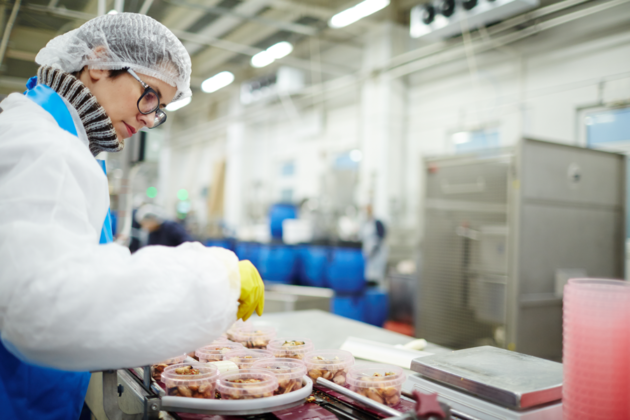
Focus on Food Safety: The ‘ERA’ of increasing risk management
By Dr. Amy Proulx
Food Safety Canadian Food Inspection Agency Editor pick ERA programs Photo © Pressmaster/ Adobe Stock
Photo © Pressmaster/ Adobe Stock We all hear the words, “Big Data,” but most businesses, especially small ones are still wrapping their heads around this concept. Both the Canadian Food Inspection Agency (CFIA) and United States Food and Drug Administration (FDA) are jumping into a new era with ERA (establishment-based risk assessment) programs focused on application of predictive analytics and algorithm-based food safety analysis. The key outcome for food processors is that federal food safety authorities will use new ways to understand, quantify and apply risk within the regulatory space.
The U.S. FDA bases its ERA strategy on the four pillars of tech-enabled traceability; smarter tools and approaches for prevention and outbreak response; new business models and retail modernization; and food safety culture. CFIA’s ERA model focuses on inherent risk, mitigation, inspection, and compliance and defines risk of activities based on novel algorithms. Let’s break down how to prepare your organization for the upcoming ERA.
Perform risk analysis
In some companies, risk assessment only gets done when emergencies arise. Risk assessment should be included in FSQA task rotation and become part of the food safety culture system—when a risk is identified, there’s a channel to communicate quickly with decision-makers and respond. We know the classic risk assessment steps from HACCP-based programs: identify hazards, characterize them, determine the exposure, and estimate probability of exposure. There are activities involved in direct food safety risk assessment: performing site-specific observations of manufacturing, observing, and analyzing quality control data; interviewing key personnel involved in production; reviewing certificates of analysis from suppliers; and reviewing customer complaint and regulatory compliance logs.
There’s a second layer of risk assessment that is not as common but just as important, and that’s looking for indirect risks that could impact product safety. Are you monitoring for potential labour disruption or worker shortages? If you don’t have the workers, food safety, sanitation or quality control tasks could be neglected or rushed. What about recall information from competitors or other products in a similar category? Recall information can be found on CFIA and FDA websites. Trade embargoes, emerging diseases in other regions, or political upheaval can add to risk, as we’ve seen with the war in Ukraine and export closures in Indonesia for palm oil. If you must switch suppliers or change lead times on product inputs, it places considerable pressure on manufacturing systems. Watching the news, both general and industry specific, can help.
Use traceability tools
Yes, it’s still technically legal to have your traceability program on paper-based systems. A traceability program for supplier management, process management, and finished goods management is essential in all modern food safety management systems. From the ERA program, we’re getting hints that there could be a larger push toward electronic registration systems. We already know that a lot of this is linked to GS1-based coding on packaged goods. We may start to see serialization built into GS1 coding, so that each product can be linked back to the establishment, the process and the input suppliers in a more automated way. This rapid traceability scenario will be of great interest to companies using multiple co-manufacturing steps. Being able to quickly track co-manufacturing establishments was brought to light in the recent tara flour recalls, which heavily impacted meal kit manufacturers, who in turn, are heavy users of co-manufacturing for all the modular food units in their packs.
Build a food safety culture
In the ERA programs, and in fact in all the recent GFSI program updates, a major emphasis was put on food safety culture. These are the behavioural and organizational approaches ensuring the success of food safety technical systems by creating a shared purpose and value across the entire establishment. Have you done benchmarking tools such as Lone Jespersen’s Cultivate Food Safety Culture Maturity Model to see the current state of food safety culture in your organization, and define where you should prioritize growth? Do you have clear management commitment statements that are shared with all employees? Do you walk the talk and encourage people to do the right thing?
The future era of food safety is right now. Being prepared is the hallmark of food risk management, and we can prepare for the future right now.
Dr. Amy Proulx is professor and academic program co-ordinator for the Culinary Innovation and Food Technology programs at Niagara College, Ont. She can be reached at aproulx@niagaracollege.ca.
This column was originally published in the October 2022 issue of Food in Canada.
Print this page